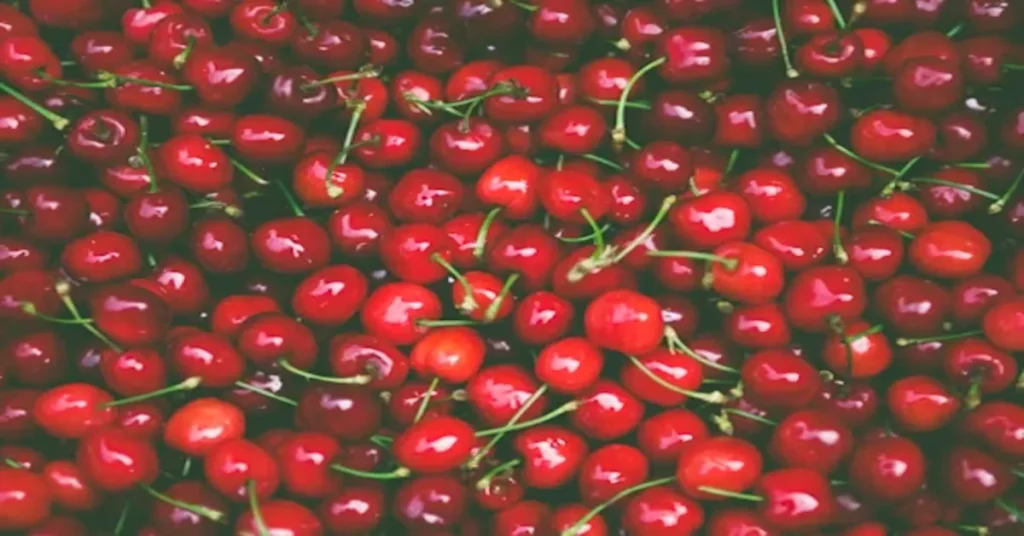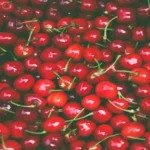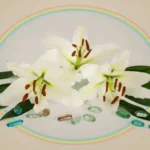When people search for “Dallas cherries,” they often want clarity on whether the phrase refers to a specific cherry variety, a local agricultural specialty, or the broader role cherries play in Dallas’s seasonal markets. In the first 100 words, here’s the direct answer: Dallas cherries typically refer to sweet cherry varieties cultivated in and around the Dallas–Fort Worth region, known for their rich flavor, deep color, and brief but highly anticipated harvest window. They are not as commercially massive as Washington State’s or Michigan’s crops, yet they occupy a niche market that blends regional pride with high culinary value. Sold fresh in farmers’ markets, featured in Dallas restaurants, and shipped selectively to nearby states, these cherries are appreciated for their freshness and locally adapted varieties. Their story weaves together horticulture, market economics, and a uniquely Texan take on cherry growing—where climate, soil, and consumer enthusiasm intersect.
“When Dallas cherries arrive, they disappear fast. It’s a two-week celebration of flavor, community, and seasonality.” — Local Grower, 2024
Historical Roots of Cherry Cultivation in Dallas
The history of cherry cultivation in the Dallas region dates back to early 20th-century experimental orchards. Farmers sought to adapt sweet cherry varieties, traditionally grown in cooler climates, to North Texas’s challenging weather patterns. Through grafting, selective breeding, and the use of drought-tolerant rootstocks, growers achieved varieties resilient to hot summers yet capable of producing high-quality fruit. Initially, cherries were grown mainly for local consumption, with roadside stands being the primary point of sale. Over time, niche growers began offering them to specialty grocers and restaurants. The challenge has always been the narrow harvest window—often no more than two to three weeks in late May or early June—which makes timing and distribution critical. This short availability contributes to their exclusivity and elevates them to a seasonal event for Dallas food lovers.
Climatic and Soil Adaptations
Dallas cherries thrive in microclimates where soil drainage, sun exposure, and moderated winds align perfectly. While North Texas summers can be unforgiving, early-ripening varieties avoid the worst heat, completing their fruiting cycle before July. The soil composition—often a mix of sandy loam and clay—provides both stability and water retention, though growers amend it with organic matter to optimize cherry tree health. Some orchards employ shade netting to reduce sun scorch and manage temperature fluctuations. Frost protection measures in early spring are also critical, as cherry blossoms are sensitive to sudden temperature drops. These adaptations illustrate how local farmers have mastered the art of coaxing a traditionally temperate-zone fruit into a warmer environment while maintaining desirable sweetness and texture.
Table 1: Key Varieties of Dallas Cherries
| Variety Name | Flavor Profile | Harvest Time | Notable Traits |
|---|---|---|---|
| Texan Bing | Sweet, deep red | Late May | High sugar content, thick skin |
| Lone Star Rainier | Sweet-tart, yellow-red | Early June | Distinct blush, firm flesh |
| Blackland Jewel | Rich, almost wine-like | Late May | Adapted to clay-rich soils |
| Prairie Sweet | Mildly sweet | Late May | Drought-tolerant, smaller fruit |
| Trinity Crisp | Tart-sweet balance | Early June | Excellent for baking and preserves |
Market Presence and Consumer Demand
Dallas cherries occupy a premium slot in the local produce market. Because of their scarcity, they command higher prices than imported cherries during their season. Farmers’ markets across Dallas–Fort Worth, from the Dallas Farmers Market downtown to suburban weekend events, become hubs for cherry lovers during late spring. Local restaurants, especially those emphasizing farm-to-table menus, often highlight Dallas cherries in desserts, cocktails, and even savory dishes like duck with cherry glaze. The small production scale creates a sense of urgency; regular customers know to arrive early to secure their share. This localized market dynamic makes Dallas cherries more of an artisanal product than a commodity crop, a distinction that shapes both their pricing and their cultural value.
The Role of Sustainable Farming
Sustainability has become a significant selling point for Dallas cherry growers. Many orchards use integrated pest management (IPM) systems, reducing chemical inputs and encouraging beneficial insects. Water conservation is critical in Texas agriculture, so drip irrigation and mulching are widely employed to minimize water loss. Some growers are experimenting with regenerative practices, such as cover cropping to improve soil health and biodiversity. By emphasizing sustainability, these producers appeal to a growing segment of consumers who are willing to pay more for fruit that aligns with their environmental values. Moreover, sustainable practices help maintain the delicate balance needed for cherry trees to produce consistently in challenging climates.
Table 2: Nutritional Profile of Dallas Cherries (Per 100g)
| Nutrient | Amount | Health Benefit |
|---|---|---|
| Calories | 63 kcal | Energy source without excessive sugar |
| Carbohydrates | 16 g | Natural fruit sugars for quick energy |
| Fiber | 2 g | Supports digestion |
| Vitamin C | 8 mg | Boosts immune system |
| Potassium | 222 mg | Supports heart health |
| Antioxidants | High | May reduce inflammation and oxidative stress |
Culinary Uses and Pairings
Dallas cherries are highly versatile in the kitchen. Their sweetness pairs beautifully with creamy cheeses like brie or goat cheese, while tart varieties enhance salads or roasted meats. In desserts, they shine in pies, tarts, cobblers, and compotes. Mixologists in Dallas bars craft seasonal cocktails using muddled cherries or cherry syrup, often paired with bourbon or tequila for a Southern twist. Chefs value their firmness, which holds up during cooking, preventing the mushiness that can occur with imported fruit. For home cooks, freezing cherries at peak ripeness preserves their flavor, allowing for year-round enjoyment in smoothies or baked goods.
Cultural Significance in Dallas
In Dallas, cherries have transcended their role as mere fruit to become a seasonal marker. For some families, visiting orchards in late spring is a tradition, much like pumpkin patches in autumn. Local media outlets often publish cherry recipes or announce “first pick” dates, turning the harvest into a mini-festival of sorts. The pride associated with Dallas cherries mirrors the affection Texans hold for other regional products like Hill Country peaches or Gulf Coast seafood. This cultural attachment ensures that even though Dallas cherries are a niche product, they hold an outsized place in the city’s seasonal food calendar.
Economic Impact and Challenges
While Dallas cherries contribute only modestly to Texas’s agricultural GDP, they provide vital income for small and mid-sized farms. Their high per-pound price offsets the relatively small yield per acre. However, challenges persist: unpredictable spring weather can devastate blossoms, pests like cherry fruit flies require constant vigilance, and competition from large-scale producers in cooler states puts pressure on pricing. The key advantage Dallas growers hold is freshness—cherries can be harvested and sold the same day, a benefit no imported product can match.
Conclusion
Dallas cherries represent more than just a fruit; they embody the intersection of agricultural innovation, regional pride, and culinary artistry. Their short season and limited supply make them a coveted delicacy in North Texas, eagerly awaited each year by both home cooks and professional chefs. By embracing sustainable practices, fostering community traditions, and maintaining exceptional quality, Dallas cherry growers have created a product that is as much a cultural event as it is a food item. In a marketplace dominated by mass production, Dallas cherries remind us that local, seasonal, and carefully cultivated produce still holds a special place.
“Each cherry season is like a concert—you know it won’t last, but that’s what makes it unforgettable.” — Dallas Chef, 2023
5 Detailed FAQs
Q1: When is Dallas cherry season?
Typically from late May to early June, depending on weather and variety.
Q2: Where can I buy Dallas cherries?
Primarily at Dallas–Fort Worth farmers’ markets, select grocery stores, and some local orchards.
Q3: Are Dallas cherries organic?
Some orchards are certified organic, while others follow low-spray or sustainable practices without full certification.
Q4: Can Dallas cherries be shipped?
Yes, but due to their delicate nature, most shipping is limited to nearby regions for freshness.
Q5: How do Dallas cherries differ from other U.S. cherries?
They are locally grown, have a shorter season, and are often sold fresher than mass-market imported cherries.






